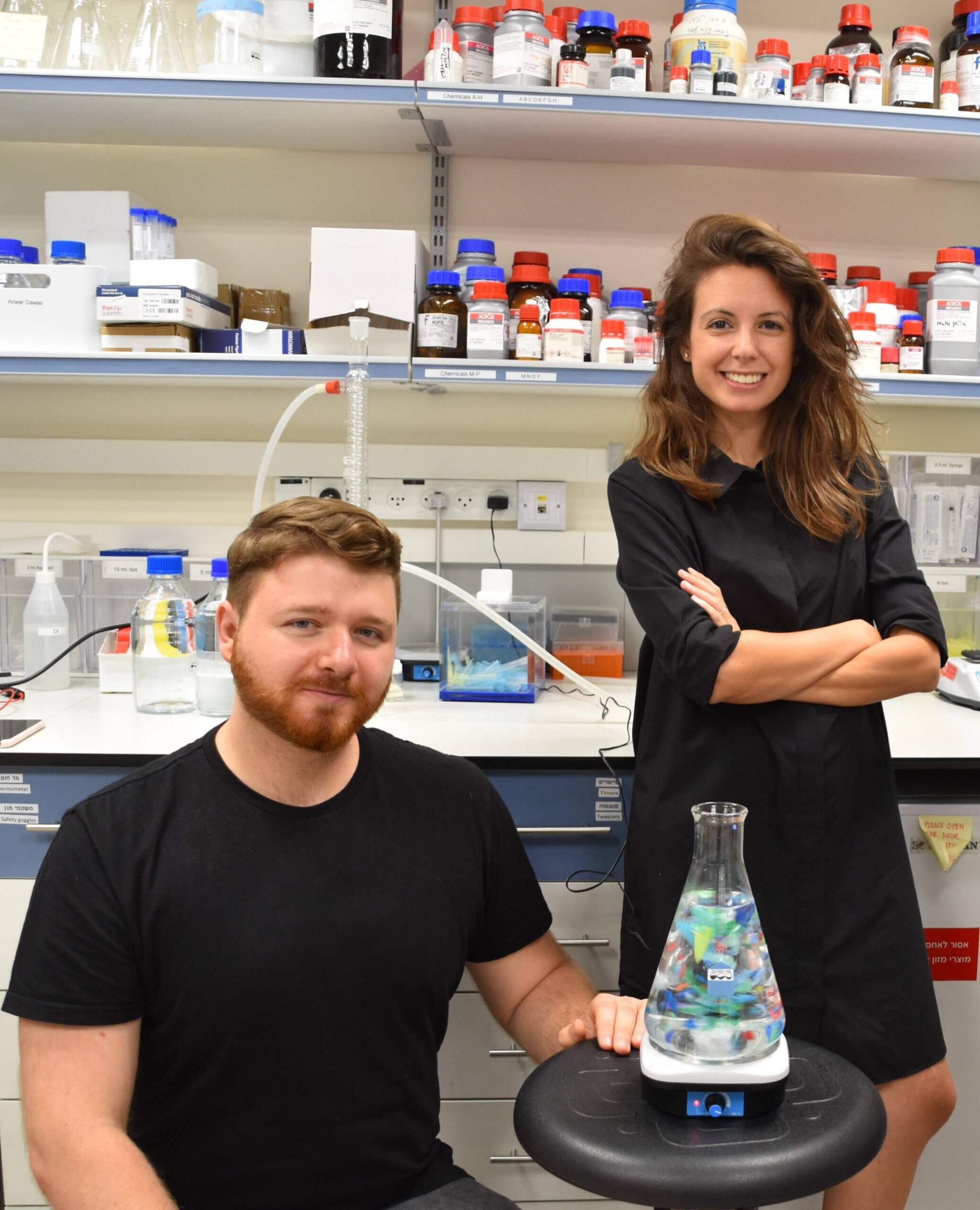The researchers: "The microplastics are a kind of magnet for environmental pollutants, 'driving' them through our digestive system, and releasing them in a concentrated form in certain areas - thus causing increased toxicity."

A new study by researchers from Tel Aviv University found that in the marine environment, microplastics absorb and concentrate toxic organic substances, thus increasing their toxicity 10-fold, which may result in severe damage to human health. The research was conducted under the leadership of Dr. Ines Zucker from the School of Mechanical Engineering and the Porter School of Environment and Earth Sciences at Tel Aviv University, together with doctoral student Andrey Eitan Rubin.
The study was recently published in the journal Chemosphere.
Microplastic is a general name for plastic materials that appear in the configuration of tiny particles and fibers ranging in size from tens of microns to a few millimeters. Microplastics are found almost everywhere: in bodies of water, in soils, in food products, in water bottles, and even in glaciers in the North Pole. The researchers explain that since plastic is not a natural material, it breaks down very slowly in nature in a process that sometimes lasts thousands of years, and as part of this process those microplastics are formed. Throughout the process, the microplastic particles encounter environmental pollutants that adsorb on the surface of the microplastic particles, and as a pair, they may pose a threat to the environment and human health.
As part of the study, the researchers examined the entire process that microplastics go through, from the interactions it maintains with environmental pollutants to the release of the pollutants and the creation of increased toxicity. The researchers found that the adsorption of those organic pollutants on the microplastics increases the toxicity 10 times and may result in severe harm to the people who will be exposed to contaminated food and drink.
Dr. Zucker explains: "In this study, we showed that even very low concentrations of environmental pollutants, which are not toxic to humans, when they adsorb on the microplastic cause an increase in toxicity. The reason for this is that the microplastic is a kind of magnet for environmental pollutants, concentrates them on its back, 'drives' them through our digestive system, and releases them in a concentrated form in certain areas - thus causing increased toxicity."
Doctoral student Andrey Eitan Rubin adds: "For the first time, we are showing a complete "life cycle" of microplastics: from the moment of its release into the environment, through the adsorption of environmental pollutants to increased toxicity in humans. The amounts of waste thrown into the ocean every year are enormous - the best-known example is the plastic island in the Pacific Ocean, whose area is 80 times larger than the area of the State of Israel. But this is not just a distant problem - data show that Israel's beaches are among the most polluted with microplastic waste. Each of the microplastic particles that are secreted in these areas has the potential for tremendous damage since they serve as an efficient and stable platform for any pollutant that happens to reach the flora and fauna that is somewhere on land."
Dr. Zucker concludes: "We discovered that quite surprisingly, the adsorption capacity of an oxidized microplastic particle (the configuration of the microplastic after undergoing environmental weathering) is significantly higher than a non-oxidized particle. After the microplastic is loaded with environmental pollutants, through contaminated food and water, the charged particle may reach the digestive system where it releases the toxins in close proximity to the cells of the digestive system, thereby increasing the toxicity of these substances. This is another painful reminder of the serious consequences of the pollution of the marine and terrestrial environment with hazardous industrial waste, which unfortunately has been saturated with plastic in recent decades. The dangers are not theoretical but more tangible than ever. Although there is a lot of awareness of this, the preventive measures in the field are still far from leaving a significant mark."
More on the subject on the science website:

3 תגובות
Was a test group conducted in the study that examines the attachment of toxins to other micro-substances? For example, natural mineral dust, organic fibers and other tiny particles that have existed in nature since the creation of the world.
After all, the plastic materials are inert in nature, and most of them are (quantitatively) apolar. Therefore, it is likely that they will adsorb significantly fewer toxins than natural materials with the same surface area. If the natural micro-materials absorb toxins in the same cycle, or more. Apparently our bodies are built to deal with the increased toxicity, as the news article states.
It seems to me that they mainly found here a cheap technology to create a column for adsorbing pollutants from the environment. Oxidized plastic attached to a substrate that can be retrieved after binding to environmental pollutants
There is no doubt that plastic in general and microplastic in particular
are a serious source of pollution that penetrates everywhere,
But when you write that:
"The microplastic increases their toxicity tenfold
of organic pollutants in the environment",
Or:
"The adsorption of those organic pollutants onto the microplastic
Increases toxicity 10 times
There is a need for an explanation of how "the toxicity increases 10 times",
Neighbor :
A larger amount of poison does not make it more poisonous,
The degree of toxicity is measured in equal amounts,
Excessive toxicity will be when the active substance is poison
will be in a higher concentration and it doesn't happen
When the poison is attached to the microplastic,
And if so, is there a need to explain how?
again,
There is no doubt about the danger caused by G
The "transportation" of the poison by the microplastics
But for the non-chemist readers
A different wording than what is written is needed,
Or alternately explain the chemical reaction
which makes the poison more poisonous...